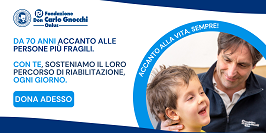Databases
Services
Submit
Restricted area
Assistive technology education for end-users: guidelines for trainers
Record number: 1
Last update: June 2008
Type of document: Manuals or books
Last update: June 2008
Type of document: Manuals or books
Author: Eustat Consortium
Editorial data: Milano: European Commission, 1999
Year of publication: 1999
Abstract:
This book - also known as the EUSTAT Guidelines - is intended for people who organise and carry out educational programmes for end-users of Assistive Technology (AT). These may be user organisations, self-help groups, rehabilitation or social services, mixed user and professional organisations, or AT providers. The book helps reflect about establishing priorities, focusing goals, and clarifying the role of AT in the users’ empowerment process. It also offers methods and tools for designing and implementing educational initiatives. This book is divided into six chapters. Chapter One (Guidelines in brief) clarifies the objectives of this book and the intended readership. It also offers a general overview of the concepts explored in the other chapters, so it can be used as a checklist for organisers of educational initiatives. Chapter Two (Basic concepts) clarifies some basic terms related to disability and AT that educators should know before undertaking any educational initiative. Chapter Three (Setting objectives and adopting methods) helps organisers of educational programmes to set objectives, label them according to a consistent terminology, and take decisions about priorities and critical factors. Chapter Four (Organising educational initiatives) addresses the organisation of educational initiatives, including the design process, the selection of topics to cover, pedagogical methods and styles, and practicalities. Chapter Five (Gearing to the audience) discusses factors to consider so as to meet the learning pace of trainees and ensure that the knowledge delivered will be useful in their daily life context. Chapter Six (Case studies) offers three case studies that may be useful as concrete examples of educational activities for end-users. These are based on experiences carried out by three EUSTAT partners in Belgium, France and Italy in 1998.
This book - also known as the EUSTAT Guidelines - is intended for people who organise and carry out educational programmes for end-users of Assistive Technology (AT). These may be user organisations, self-help groups, rehabilitation or social services, mixed user and professional organisations, or AT providers. The book helps reflect about establishing priorities, focusing goals, and clarifying the role of AT in the users’ empowerment process. It also offers methods and tools for designing and implementing educational initiatives. This book is divided into six chapters. Chapter One (Guidelines in brief) clarifies the objectives of this book and the intended readership. It also offers a general overview of the concepts explored in the other chapters, so it can be used as a checklist for organisers of educational initiatives. Chapter Two (Basic concepts) clarifies some basic terms related to disability and AT that educators should know before undertaking any educational initiative. Chapter Three (Setting objectives and adopting methods) helps organisers of educational programmes to set objectives, label them according to a consistent terminology, and take decisions about priorities and critical factors. Chapter Four (Organising educational initiatives) addresses the organisation of educational initiatives, including the design process, the selection of topics to cover, pedagogical methods and styles, and practicalities. Chapter Five (Gearing to the audience) discusses factors to consider so as to meet the learning pace of trainees and ensure that the knowledge delivered will be useful in their daily life context. Chapter Six (Case studies) offers three case studies that may be useful as concrete examples of educational activities for end-users. These are based on experiences carried out by three EUSTAT partners in Belgium, France and Italy in 1998.
Downladable documents:
- Hjælpemiddeluddannelse for handicappede og ældre mennesker: Vejledning for undervisere File format: pdf (447 KB)
- Assistive Technology education for end users: guidelines for trainers File format: pdf (425 KB)
- Educación en Tecnología de la Rehabilitación Para Usuarios Finales: Directrices Para Formadores File format: pdf (962 KB)
- Formations aux Aides Techniques pour les utilisateurs-finaux: Lignes directrices pour les formateurs File format: pdf (439 KB)
- Tecnologie per l'Autonomia: linee guida per i formatori File format: pdf (457 KB)
- Training Hulptechnologie voor eindgebruikers: Richtlijnen voor trainers File format: pdf (477 KB)
- Educação em Tecnologias de Apoio para Utizadores Finais: Linhas de Orientação para Formadores File format: pdf (483 KB)
ISO/SIVA codes related to this document (click on the list items to see the other documents related to the selected code):








